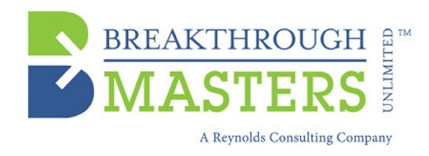It is mid-February in 2025 and time to ask the question, are we where we wanted to be? Fourth quarter planning identified new opportunities, better ways to do things, high-potential projects and a path to growth. Are you on track?
As I write this, it is actually still 2024. So, I am time traveling a bit. I am deep in the throes of planning, researching, and packing for a month-long trip to Morocco from mid-January until mid-February. At this point, I am relying on what I have learned to figure out what I will need. I am counting on the itinerary to give me a good feeling of what to expect. And I am trying to do contingency planning on the weather, so I am properly prepared for whatever it brings. There are several x factors, of course, or things I don’t control—like the other riders. Will they be good horsewomen/horsemen or underexperienced and a jeopardy to the rest of us? Will they be fun and friendly, or grumpy and arrogant? I have experienced both, but I bet you can guess which I prefer! By now, I have found out and am hopefully living the dream!
Put yourself back into late 2024 and ask yourself, what were your expectations for mid-February? Would goals and expectations for new processes and projects been clearly communicated by now so everyone is off and running? Or maybe you did that in 2024 so all could hit the ground running in January, and you forecast to have x new customers and y% of the pipeline filled by now. Are you there yet?
For many of us we have blinked, and it is already February, and we feel like we are just getting started in the year. Undoubtedly, to many, it seems early to be checking on what is working and what is not. But in reality, how things are going now is a great indicator of what we can expect by year end. By now you have observed your x factors, the unknown elements for which you couldn’t plan. Are employees responding as hoped? How have competitors reacted to your new offers and programs? Are customers delighted by your value adds? Is your pipeline meeting targets? Or is everything business as usual? If you keep putting off the strategic projects, the employee training, the outreach to new customers because you are just trying to keep up with yesterday’s schedule, something is wrong.
If you haven’t seen the results you anticipated, now is the time to find out why. Not in 6 months when you have barely half a year to “make it up”. If you haven’t analyzed what isn’t working until June, assuming it will sort itself out, you will have waited too long. Small fixes now can mean great wins later. Wait too long and you will be relying on hope and possibly trying to muscle your way to a good outcome.
With everyone heads down to the task at hand, it seems impossible to take a timeout to step back and examine what isn’t working yet. But a short time-out likely won’t crash the company and can yield big dividends later. Think of it like half time at a football game. The team makes adjustments based on performance so far. But we don’t want to wait until half time when we may be too far behind to really change the game plan enough.
There are four tools you should have to help you assess your progress (assuming you have a strategic plan in place):
1.) Implementation Planning: Every new initiative driving growth should have detailed timetables that show you what needs to be done by whom and when, so you can track progress. Essentially it is a strategic implementation plan. If you don’t have one, it is hard to know if you are on track or not. Delays and excuses seem reasonable when no timetable is driving progress. If you lack a timetable, make one now.

2.) Leading indicators: Measures that help predict outcomes help us understand where we are. Revenue forecasts are not leading indicators, they are lagging because they are finite. Once booked, they are complete. Pipeline is more of a leading indicator or sales of a certain type—higher margins, larger volume, repeatable, etc. Other leading indicators can be leads, relationships, employee engagement and customer renewals. If you are like most businesses that look regularly at operational goals and revenue targets, you are not tracking the things that will most lead to growth.

3.) Communication Plan: One of the most underrated contributors to performance is good communication. In fact, if you have effective two-way communication, you typically have more engaged people, greater clarity in priorities and expectations, and higher results. According to one source, it is 37% higher! If you don’t have an intentional two-way communication plan that informs all associates about the goals, progress, wins and losses of the organization, you are falling short. People can’t contribute if they don’t understand.

4.) Dynamic Professional Development: You have rock stars that just seem to keep surpassing expectations. But what percentage of your workforce do they represent? What if everyone was a rock star? Do you have programs in place to enable everyone to grow and develop new skills? Encourage everyone to contribute value beyond their daily job descriptions? Mentoring programs are a great way to challenge and motivate up and coming stars to see beyond their current roles and help the company with their new ideas. If you don’t have something in place for at least high-potential performers you are missing out.

I will be checking back with you soon, and hope to see your progress and will share my adventures and outcomes against expectations from Morocco!
Stock images used are from 123rf.com.

